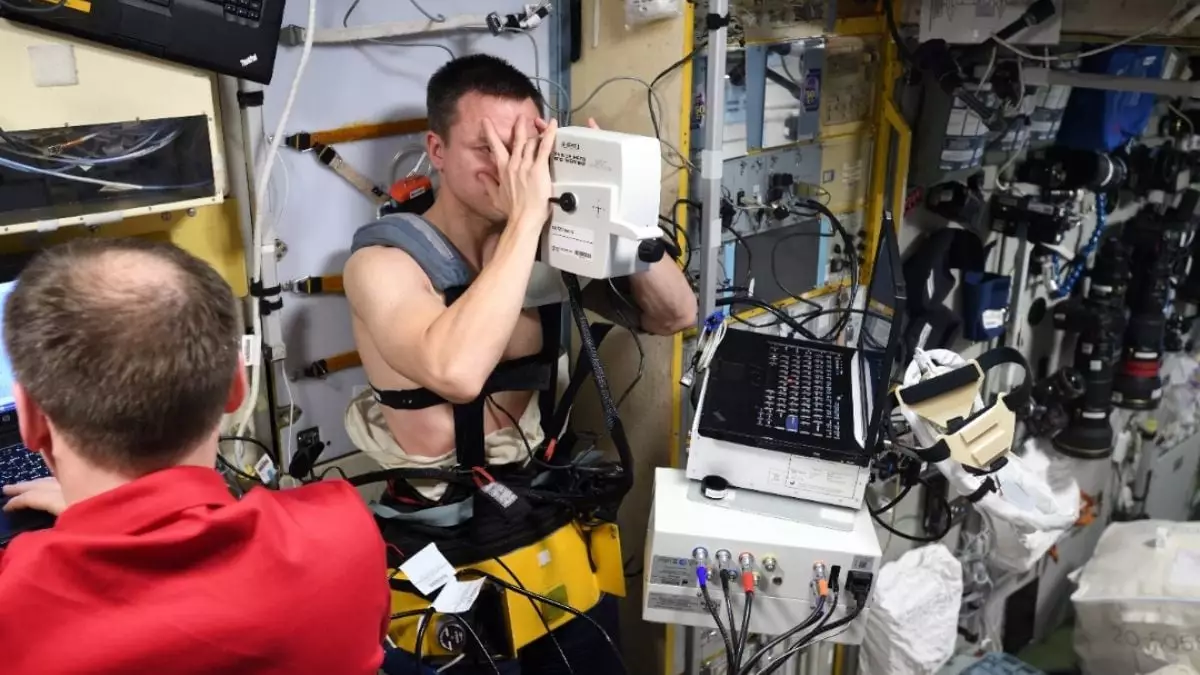The exploration of space has long captivated human imagination, but it also presents significant physiological challenges that astronauts must face. One of the most alarming issues reported by those spending extended durations aboard the International Space Station (ISS) is substantial changes in vision. Research indicates that approximately 70% of astronauts who have lived in microgravity for six to twelve months have demonstrated noticeable visual impairments. This phenomenon, termed spaceflight-associated neuro-ocular syndrome (SANS), is raising concerns not only for the well-being of astronauts but also for the feasibility of prolonged missions into deep space, such as explorations of Mars.
Astronauts experiencing SANS report symptoms such as optic nerve swelling, alterations in the structure of the eye, and blurred vision. These changes are believed to stem from the way bodily fluids redistribute in microgravity, resulting in increased pressure on the ocular structures. The flattening of the back of the eye—along with other eye abnormalities—has sparked investigations into the precise mechanisms of these ocular changes. While numerous astronauts recuperate from these symptoms after returning to Earth, the potential long-term effects remain uncertain, complicating the planning of future space missions.
In a recent exploration of this critical issue, researchers led by Santiago Costantino from the Université de Montréal examined the ocular health of 13 astronauts post-mission. The astronauts, aged around 48 on average, hailed from various nationalities, including those from the United States, Canada, Europe, and Japan. Comprehensive measurements of their eye health—such as ocular rigidity, intraocular pressure, and ocular pulse amplitude—were recorded before and after their time in space. The striking findings revealed a 33% reduction in ocular rigidity, an 11% drop in intraocular pressure, and about a 25% decrease in ocular pulse amplitude, displaying the extent of vision-related changes attributed to prolonged spaceflight.
SANS is not a new occurrence; its symptoms have been documented since the early 2000s, including reports from Russian cosmonauts on the Mir space station. NASA officially categorized the syndrome in 2011, emphasizing the need for awareness in astronaut health management. The complexities of microgravity continue to challenge scientists, as they seek to uncover the underlying mechanics of SANS and how to combat its effects during potential future missions beyond lower Earth orbits.
In light of the challenges associated with SANS, researchers are exploring various countermeasures. These strategies include the use of negative pressure devices, pharmaceutical interventions, and tailored nutritional plans aimed at minimizing the risks associated with vision impairment. Furthermore, studies are underway to identify astronauts who may be at higher risk of experiencing severe ocular issues, a crucial step toward proactive health management in space travel. Notably, Costantino suggested that changes in the mechanical characteristics of the eye might serve as potential biomarkers for early detection of SANS, which could lead to timely interventions.
As space agencies look toward ambitious missions to destinations such as Mars, protecting astronaut vision will be paramount to the success of these ventures. Emphasizing the importance of comprehensive research into the effects of microgravity on human physiology will ultimately play a critical role in ensuring the safety and health of astronauts as they embark on transformative journeys across the cosmos.


Leave a Reply